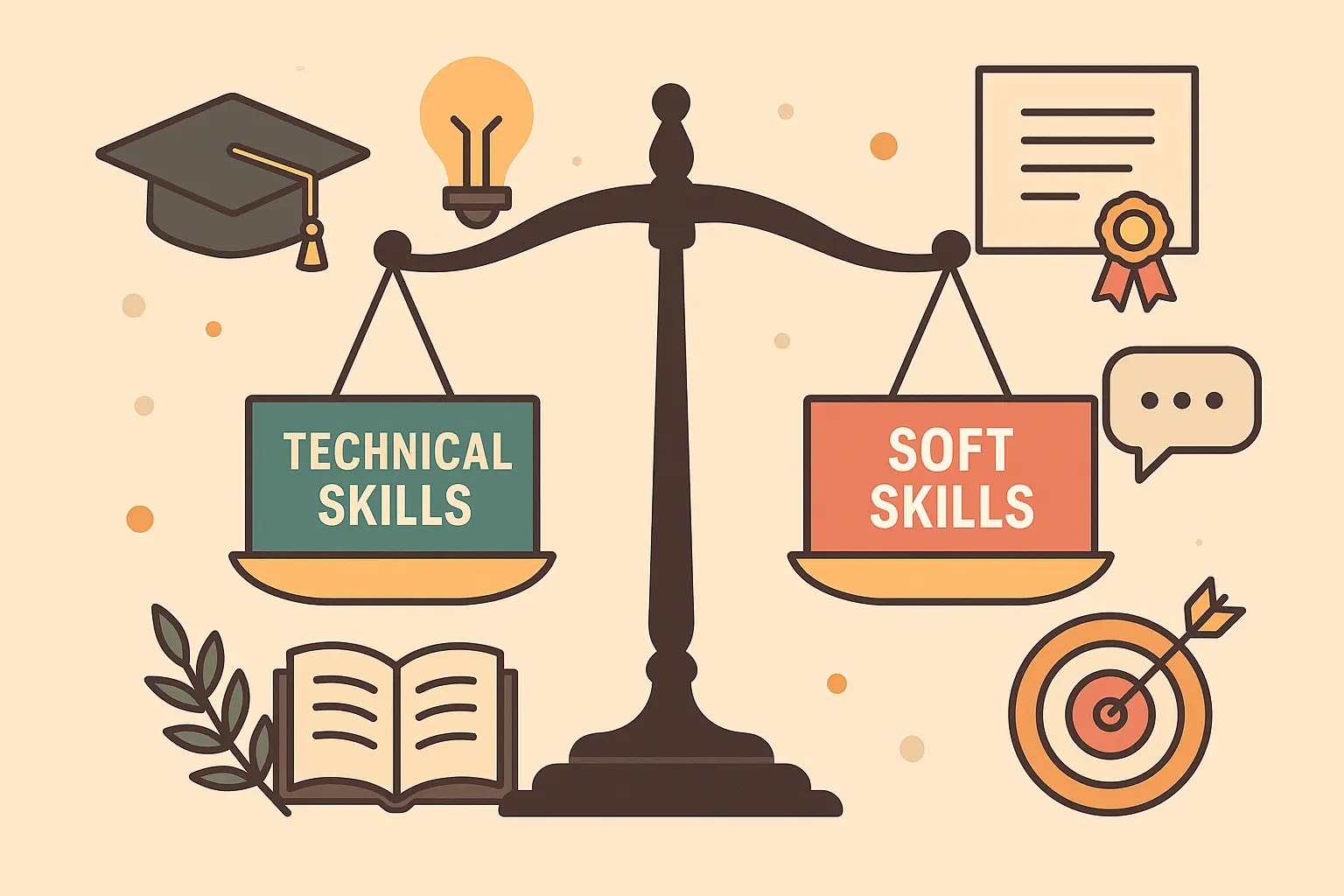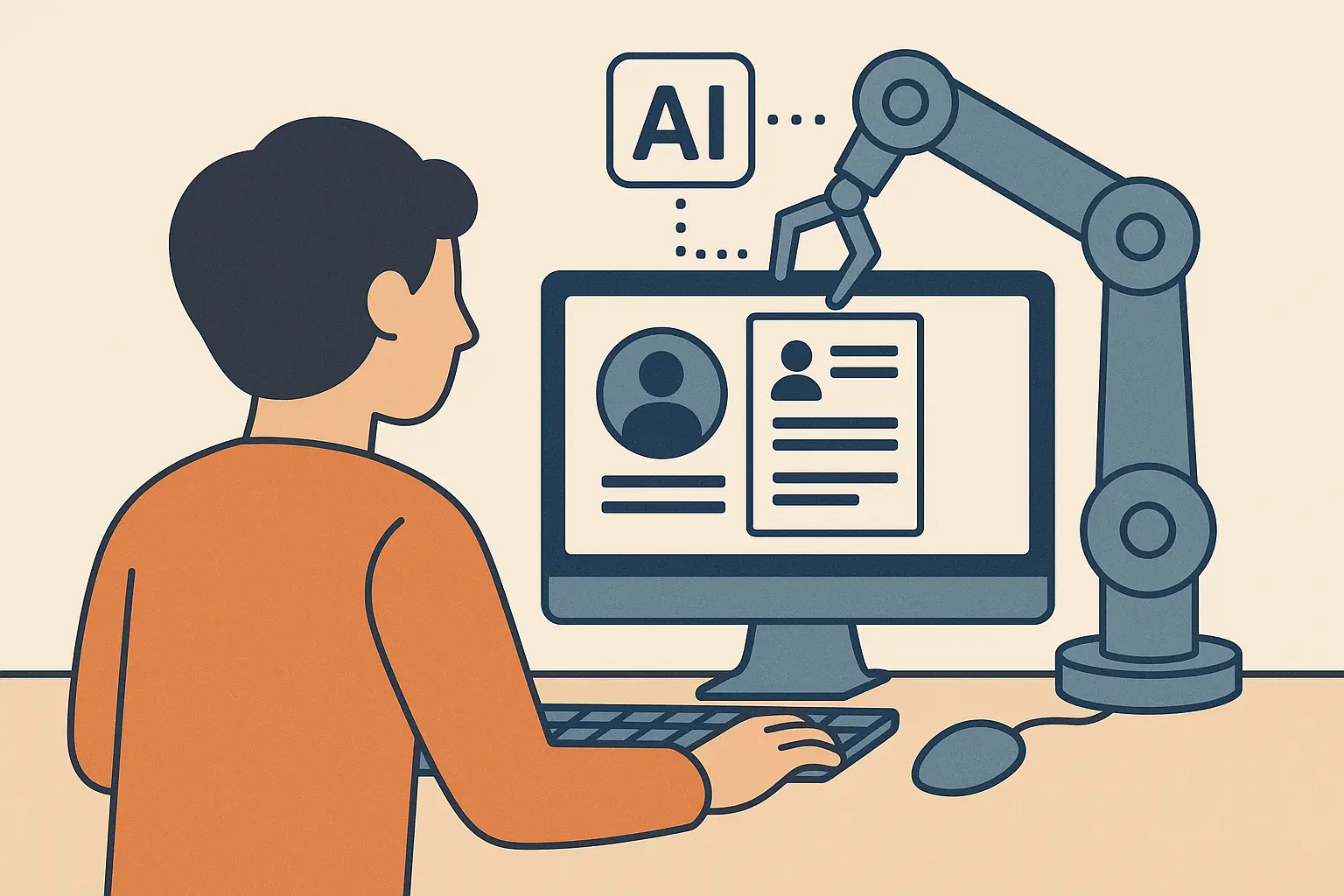What to Put on a Resume: The Complete Guide That Actually Gets You Hired

Last week, I watched a hiring manager toss aside a resume from someone with perfect qualifications. Why? Their email was ‘partygirl2024@gmail.com.’ Don’t be that person. If you’re wondering what to put on a resume in 2024, it starts with avoiding simple mistakes like unprofessional email addresses.
A Zippia survey done in 2023 found that 1 in 4 hiring managers spend less than 30 seconds looking at a resume, making every element of your resume crucial for making a strong first impression. Resume Genius However, our 2024 Hiring Trends Survey found that 57% of hiring managers review a resume for 1–3 minutes, showing that while initial screening is brief, qualified candidates do receive more thorough review.
Your resume has one job: get you an interview. Everything else is just noise. Here’s what actually matters in 2024.
The Basics: What Actually Goes on Your Resume
Your resume needs to do two things: get past the robots and impress the humans. Knowing what to put on a resume makes the difference between landing interviews and getting filtered out. Most people mess up both. Let’s fix that.
Understanding modern professional resume format standards isn’t optional anymore. Your resume is competing against hundreds of others, and small mistakes kill your chances before anyone even reads your qualifications.
Contact Information That Won’t Get You Rejected
Skip your full address – it’s 2024, not 1994. Here’s what you actually need if you’re figuring out what to put on a resume in 2025:
Your full name, a professional email (firstnamelastname@gmail.com works fine), your phone number, your city and state, and your LinkedIn URL. That’s it.
35% of employers reject resumes with unprofessional email addresses, so ditch anything cute, funny, or that references your college drinking habits. Resume Genius
Make sure your LinkedIn actually matches what’s on your resume. Seriously. Hiring managers check, and mismatched dates or job titles make you look sloppy or dishonest.
Professional Summary vs. Objective: The Fight is Over
Skip the objective statement. Nobody cares what you want from the job – they care what you bring to it.
A professional summary is your elevator pitch in 2-3 sentences. When people ask what to put on a resume at the top, the answer is always a tailored professional summary — not an outdated objective statement. It highlights your best achievements and most relevant skills. Tailor it for each job and include keywords from the posting, but don’t sound like a robot.
Recent graduates are finding that showcasing potential rather than extensive experience is key to landing opportunities. According to “University of Cincinnati career guidance”, recruiters and grad school committees don’t expect decades of experience from students; they expect to see potential demonstrated through learning, growth, and application of skills in various contexts.
Terrible Objective: “Seeking a marketing position where I can utilize my skills and grow professionally.”
Strong Professional Summary: “Marketing professional with 5+ years boosting brand awareness through digital campaigns. Increased social media engagement 40% and managed $100K advertising budgets. Proven track record turning data insights into marketing wins.”
The only time to use an objective? If you’re entry-level or completely changing careers and need to explain why you’re pivoting.
Your Work Experience: Where Most People Blow It
Here’s where most people mess up: they write job descriptions instead of showing what they actually accomplished. Nobody cares that you “managed social media accounts.” They want to know you boosted engagement by 45%.
When describing your experience, focus on hard skills that show measurable results. This combination proves both what you can do and what you’ve accomplished.
Turn Boring Jobs Into Impressive Achievements
Use the STAR method: Situation, Task, Action, Result. Start with action verbs like “increased,” “managed,” or “developed” – not “responsible for” or “duties included.”
Include numbers whenever possible. Even if you don’t have exact figures, estimate ranges or use percentages. The goal is showing impact, not just activity.
93% of all resumes include action-oriented phrases, like action verbs and power words, showing everyone knows this rule – but most people still mess it up. Resume Genius
Before: “Responsible for customer service and handling complaints.”
After: “Resolved 95% of customer complaints within 24 hours, boosting satisfaction scores 30% and cutting customer churn 15% in six months.”
Keywords That Don’t Sound Robotic
ATS systems scan for keywords before humans see your resume. Study job descriptions like you’re cramming for a final exam. Highlight crucial terms and work them naturally into your descriptions.
Focus on hard skills, software names, and industry terms. But don’t keyword stuff – I’ve seen resumes that read like someone threw a dictionary at Microsoft Word. The keywords need to make sense and flow naturally.
Employment Gaps: Address Them Head-On
Employment gaps happen. Life happens. Pretending they don’t exist just makes you look dishonest.
For gaps under six months, use years instead of months for dates. For longer gaps, briefly explain what you did – education, volunteering, freelancing, family care. Focus on skills you kept sharp during that time. Be honest but strategic.
Skills and Education: Getting Them Noticed
Don’t just dump your skills in a random list. Organize them by category and relevance. If you’re unsure what to put on a resume skills section, start with your strongest technical abilities and then balance them with soft skills employers value. List your strongest, most job-relevant skills first.
Technical Skills That Actually Impress
Group skills into categories: Programming Languages, Software, Tools, whatever makes sense for your field. List them in order of how good you are and how relevant they are to the job.
Include skill levels when it makes sense (Expert, Intermediate, Basic), but be honest. If you list it, you might get tested on it. I’ve watched candidates crash and burn because they claimed expertise in something they’d barely touched.
The modern job market values diverse skill sets. “Money Talks News” reports that hiring managers want candidates with both technical abilities and soft skills, so present a well-rounded portfolio.
Pro tip: Don’t list “Microsoft Office” unless the job specifically asks for it. It’s 2024 – we assume you can use email and Word.
Education: When It Matters and When It Doesn’t
If you’re experienced (5+ years), put education at the bottom. If you’re new to the workforce, put it near the top.
Include your degree, school, graduation year, and GPA only if it’s above 3.5. Add relevant coursework, honors, or projects if they’re job-relevant. Skip high school unless you didn’t go to college.
Format and Design: Beating the Robot Test
Your resume needs to look professional and work with ATS systems. Fancy graphics and creative layouts might look cool, but they confuse the software that decides if humans ever see your resume.
Understanding ATS-friendly design principles isn’t optional. The prettiest resume in the world is useless if it gets filtered out by robots.
Templates That Work (Not Just Look Pretty)
Use simple templates with clear headers and standard fonts like Arial, Calibri, or Times New Roman. Stick to traditional section order: Contact Info, Summary, Experience, Education, Skills.
Keep formatting consistent throughout – same bullet points, font sizes, and spacing. It might seem boring, but boring gets interviews.
PDF vs. Word: The File Format Drama
Most modern ATS systems handle both, but Word (.docx) files are safer for older systems. PDFs keep your formatting perfect across different devices, which matters for email submissions.
Save both versions and check application instructions. When in doubt, Word is usually safer for ATS compatibility.
White Space Is Your Friend
Don’t cram everything onto one page if it makes your resume unreadable. Use margins of at least 0.5 inches and appropriate line spacing.
70% of hiring managers prefer two-page resumes over cluttered one-page versions. Quality beats arbitrary length restrictions every time. Resume Genius
Keep colors minimal – navy blue, dark gray, or black for headers. Make sure everything prints clearly in black and white.
Industry-Specific Tweaks
What works in a tech startup might bomb at a law firm. Research your industry’s expectations before you hit submit.
Creative vs. Traditional Fields
Creative industries (marketing, design, media) might appreciate portfolio links and project descriptions. Traditional sectors (finance, law, healthcare) want conservative formatting and detailed qualifications.
When in doubt, err conservative. You can show personality in your cover letter or interview.
Startup vs. Corporate
Startups often value versatility and growth potential. Emphasize learning agility and diverse project experience. Corporations typically want proven expertise and stability. Highlight long-term achievements and specialized skills.
Modern Tools That Actually Help
AI has changed resume writing completely. Tools can help optimize content, suggest improvements, and ensure ATS compatibility. When choosing solutions, look for comprehensive resume builders that offer intelligent optimization alongside formatting.
AI-Powered Writing Assistance
AI resume builders can transform basic job descriptions into achievement statements. They analyze job postings and suggest tailored improvements.
This technology helps if you struggle with self-promotion or you’re changing industries and need help translating your experience. AI can generate multiple versions of bullet points and ensure consistent tone.
Just don’t let AI make you sound like a robot. The suggestions should enhance your voice, not replace it.
Application Strategy: Getting Results
Creating a great resume is half the battle. You need a system for customization, tracking, and follow-up.
Customize Smart, Not Hard
Create a master resume with all your experiences, then customize versions by emphasizing relevant achievements. Don’t rewrite everything – just rearrange and highlight what matters most for each role.
Keep a naming system for files (FirstName_LastName_Company_Role_Date) and track which versions you send where. This prevents sending your “Google Marketing Manager” resume to a finance job at a bank.
Track What Works
Monitor your application-to-response ratio. If you’re getting few responses, your resume needs work. If you’re getting interviews but no offers, focus on interview prep instead.
Test different approaches with similar jobs. Try different summary statements or achievement descriptions. Document what gets better response rates.
LinkedIn Integration
Your LinkedIn should complement, not copy, your resume. Use LinkedIn’s longer format for additional context and personality. Make sure job titles, dates, and companies match exactly between platforms.
Include a portfolio link in your contact section if relevant. Make sure it loads quickly and showcases your best, most recent work.
Advanced Strategies That Set You Apart
Moving beyond basics means mastering quantification and showing cultural fit. Understanding when to use CV vs resume formats becomes crucial for different positions or international applications.
Numbers That Tell Your Story
Use the CAR framework: Challenge, Action, Result. Identify problems you solved, actions you took, and measurable outcomes you achieved.
Different industries value different metrics. Sales roles want revenue figures. Marketing focuses on engagement rates and ROI. Operations highlights efficiency improvements. Research your field’s key performance indicators and frame achievements using relevant metrics.
Show Soft Skills Through Examples
Don’t list soft skills separately – prove them through examples. Instead of claiming “strong leadership,” write “Led 8-person cross-functional team to deliver project 2 weeks ahead of schedule.”
Research target companies’ values and incorporate relevant experiences that show alignment. If they value innovation, highlight projects where you introduced new processes.
Quality Control: Getting It Perfect
Excellence requires systematic review and continuous improvement based on real performance data.
Proofreading That Actually Works
Do separate passes for different elements: content accuracy, grammar and spelling, formatting consistency, and overall flow. Use spell-check but don’t rely on it – read everything aloud to catch awkward phrasing.
Get feedback from people in your target industry. Ask specific questions about clarity and impact, not general opinions. Consider which feedback to implement based on the reviewer’s expertise.
Performance Tracking
Track application response rates, interview conversion, and time-to-response. Use this data to refine your approach and identify what actually works.
Test different elements across similar applications – summary statements, achievement phrasing, or skill presentations. Change one thing at a time to isolate what drives better responses.
Final Thoughts
Your resume isn’t just a document – it’s your marketing tool in a competitive job market. Ultimately, knowing what to put on a resume — and what to leave off — is what separates strong applicants from the rest. The rules have changed, and what worked five years ago might hurt your chances today.
The best job seekers treat their resume as a living document that evolves with each application. They know when to emphasize technical skills versus achievements, how to quantify results meaningfully, and why keyword optimization matters without sacrificing readability.
Remember: hiring managers spend about six seconds on initial reviews. Those six seconds determine if your application moves forward or gets trashed. Every element should serve a purpose, from your professional summary to your contact formatting.
Whether you’re using AI-powered tools or going manual, the principles stay the same: clarity, relevance, and measurable impact. Your resume should tell a compelling story about where you’ve been and where you’re capable of going next.
Focus on showing results, not just responsibilities, and you’ll be ahead of 80% of other applicants. That’s the difference between getting lost in the pile and landing the interview.









